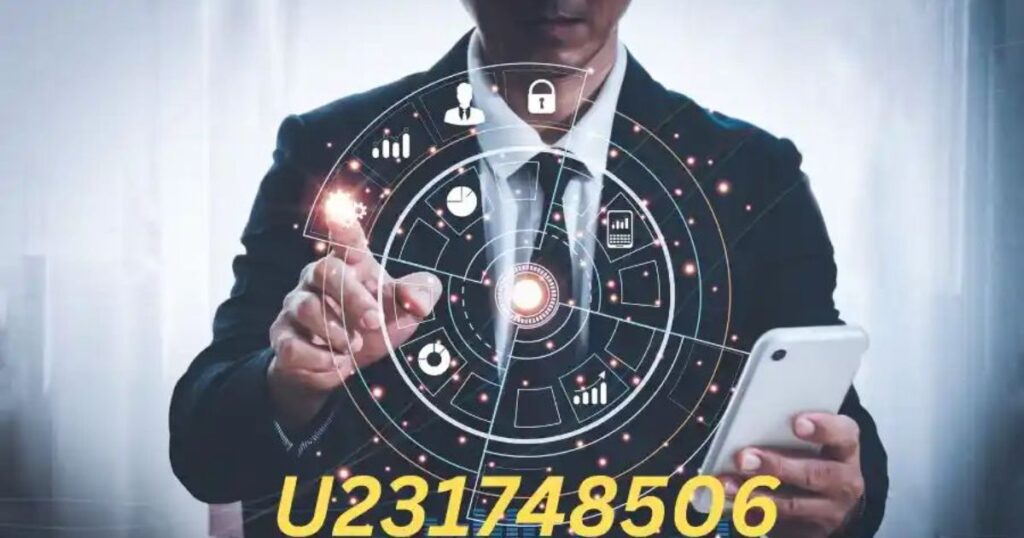Code U231748506 stands as one of the most intriguing and enigmatic identifiers in the realm of modern cryptography. This code, shrouded in mystery and complexity, has piqued the interest of cryptographers, cybersecurity experts, and enthusiasts alike. In this comprehensive blog post, we will delve into the secrets of Code U231748506, exploring its origins, significance, and the latest developments surrounding it. Whether you’re a seasoned professional or a curious reader, this guide aims to unravel the complexities of this code and shed light on its various facets.
What is Code U231748506?
Definition and Origin
Code U231748506 is a sophisticated cryptographic identifier used in various fields for secure communication and data protection. Its origins can be traced back to advancements in encryption techniques that emerged during the Cold War era. The code was initially developed to enhance national security and safeguard sensitive information from unauthorized access.
Historical Significance
The historical significance of Code U231748506 is deeply rooted in the geopolitical climate of the 20th century. During the Cold War, cryptographic techniques were crucial for code-breaking and securing communications between intelligence agencies. Code U231748506 emerged as a response to the growing need for advanced encryption methods and secure communication channels.
Usage and Applications
Code U231748506 is employed in a variety of applications, including:
- Secure Communication: Ensuring that messages and data transmitted across networks are protected from interception and unauthorized access.
- Cryptographic Systems: Enhancing the security of encryption algorithms used in various sectors, such as finance, defense, and telecommunications.
- Cybersecurity: Serving as a critical component in protecting against cyber threats and ensuring the integrity of digital information.
For example, consider a multinational corporation that uses Code U231748506 to safeguard confidential financial transactions and internal communications. By employing this code, the company can ensure that its sensitive data remains secure from potential cyber-attacks.
Decoding the Secrets of Code U231748506

Historical Background
The development of Code U231748506 is a fascinating journey through the evolution of cryptographic techniques. In the early stages, it was primarily used for cryptanalysis during the Cold War. The code’s complexity and encryption methods made it a formidable tool for code-breaking.
Key Milestones
- Early Development: Code U231748506 was first introduced in the 1960s, coinciding with significant advancements in cryptography.
- Evolution: Over the decades, the code has undergone various updates and enhancements to stay ahead of emerging cryptographic challenges.
- Modernization: Today, Code U231748506 incorporates Artificial Intelligence (AI) and Machine Learning (ML) to adapt to new threats and ensure continued security.
Technical Analysis
To fully understand Code U231748506, it is essential to break down its technical components. The code utilizes a combination of advanced encryption algorithms and cryptographic techniques to achieve its goals.
Components
- Encryption Algorithms: Code U231748506 employs complex encryption algorithms that transform plaintext into ciphertext, making it unreadable without the appropriate decryption key.
- Cryptographic Techniques: The code uses various cryptographic techniques to enhance its security, including symmetric and asymmetric encryption.
For a detailed technical analysis, see the table below:
| Component | Description |
| Encryption Method | Utilizes advanced algorithms to secure data |
| Key Length | Varies depending on the level of security required |
| Algorithm Types | Includes both symmetric and asymmetric encryption methods |
| Decryption | Requires specific keys to reverse the encryption process |
The Importance of Understanding Code U231748506

Impact on Industry
Code U231748506 has a profound impact on various industries, particularly those that rely heavily on data security. Its influence extends to:
- Finance: Protecting financial transactions and sensitive customer data.
- Healthcare: Safeguarding patient records and medical information.
- Government: Ensuring secure communication between agencies and protecting classified information.
Case Studies
- Financial Sector: A global bank uses Code U231748506 to secure online transactions and prevent fraudulent activities. The implementation of this code has significantly reduced the risk of cyber-attacks.
- Healthcare Sector: A healthcare provider employs Code U231748506 to protect electronic health records (EHRs), ensuring that patient information remains confidential and secure.
Implications for Users
For individuals and organizations, understanding Code U231748506 is crucial for:
- Enhanced Security: Knowing how the code works can help in implementing effective security measures.
- Preparedness: Being aware of potential vulnerabilities and how to address them can mitigate risks associated with data breaches.
Recent Developments and Trends
Current Trends
The field of cryptography is constantly evolving, and Code U231748506 is no exception. Recent trends include:
- Integration with AI and ML: Leveraging Artificial Intelligence (AI) and Machine Learning (ML) to enhance the code’s security and adaptability.
- Advanced Encryption Techniques: Incorporating cutting-edge cryptographic techniques to address emerging threats.
Emerging Technologies
- Quantum Cryptography: Researchers are exploring the use of quantum technology to further secure Code U231748506.
- Blockchain Technology: The integration of blockchain technology with Code U231748506 is being investigated to enhance transparency and security.
Future Predictions
Experts predict that Code U231748506 will continue to evolve, incorporating new technologies and methods to stay ahead of potential threats. The focus will be on:
- Adapting to Emerging Threats: As cyber threats become more sophisticated, Code U231748506 will need to adapt accordingly.
- Enhancing Usability: Efforts will be made to make the code more accessible and user-friendly while maintaining its security.
FAQs About Code U231748506
What is Code U231748506 used for?
Code U231748506 is used for secure communication and data protection in various industries, including finance, healthcare, and government.
How does Code U231748506 work?
It utilizes advanced encryption algorithms and cryptographic techniques to transform and protect data.
What are the latest developments related to Code U231748506?
Recent developments include the integration of AI and ML, as well as advancements in encryption techniques.
Why is understanding Code U231748506 important?
Understanding the code helps individuals and organizations implement effective security measures and stay prepared for potential risks.
Conclusion
Code U231748506 remains a pivotal element in the world of cryptography, with its roots deeply embedded in the Cold War era and its significance continuing to grow in modern times. By understanding its origins, technical components, and current developments, you can gain valuable insights into how this enigmatic identifier contributes to secure communication and national security.
As technology advances and new challenges emerge, Code U231748506 will likely continue to evolve, incorporating innovations such as Artificial Intelligence (AI) and Machine Learning (ML). Staying informed about these changes will help you appreciate the complexities of cryptographic systems and their role in safeguarding our digital world.
READ MORE: The Pi Perspective: Exploring 314159u in Math and Beyond